Translated literally, the word "evergreen" means " always green" . It refers to the ability of some plants to maintain their foliage throughout the year.
Evergreen content is therefore persistent content, content that is virtually timeless, does not expire, and remains relevant long after it is published.
As an example, a blog post that discusses the release of a product or service will not be "evergreen" because after a while, its content will no longer be of interest.
Then, the blog post you are reading is precisely "evergreen" content! So there is a clear distinction between perishable content and evergreen content.
How do you find and create that " non-perishable " content that will attract visits long after it is published?

Always green content to generate more and more visits
Step 1 - Come up with evergreen content ideas by analyzing your own numbers
Content ideas come from many different sources, but in general it's best to start by studying your own resources. Ask yourself the following questions:
- Are there certain topics that are particularly popular with your visitors? Look over the past year at the topics that have been most popular and list those that historically capture the interest of the most people.
- Do you have content that gets fairly consistent traffic? All you need to do is look at your tracking indicators to identify articles that are at the top (number of total visits).
Anatomy of Timeless Content
Timeless content, should look something like this (in terms of data):
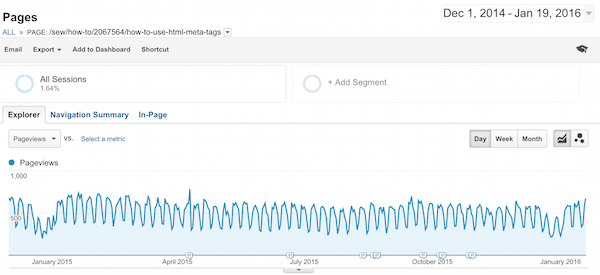
Evergreen content for the same color indicators
As you can see, this content has received visits consistently over a long period of time.
This doesn't have to be heavy traffic. If the content is relevant to the type of products or services you are selling, the most important thing is to attract the right type of visitors.
Once you've found through traffic pattern analysis, your own timeless content, determine what these pages have in common:
- Titles: do the titles have anything in common? any particular wording?
- Topics: what do these successful articles have in common?
- Style: are your successful articles more statistics, infographics, or more long-form articles?
- Presentation: how are the articles presented?
The recycling of good ideas
An easy way to create content that lasts is to refresh existing content and rewrite articles by keeping its good ideas but presenting them differently.
If you produce for example, an infographic that is very successful, you can easily keep it in your most popular content by updating the data on a regular basis.
Some sites sometimes take old articles and update them as if they were new.
This method can bring you extra clicks and help your SEO with minimal effort.
Although it can be convenient, this tactic should be used sparingly.
Step 2 - See what works on social media
Using a tool like Buzzsumo, you can identify the type of posts that work well on social media.
This can be another source of inspiration for finding the right topic or headline that you can use to produce evergreen content.
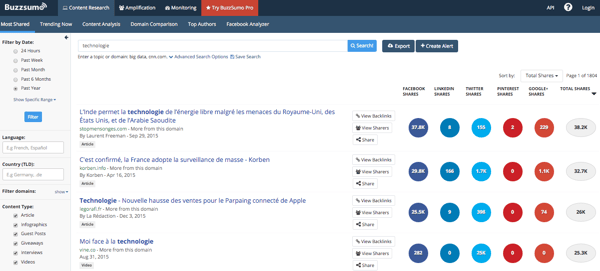
We don't advise seeking buzz at any cost, but you can take inspiration from it gracefully.
Step 3 - Match your product to the content
On the rentokil.co.uk website, rat (or what is more broadly known as pest) removal solutions are accompanied by a whole series of informative articles on the hygiene rules to be followed or the material risks involved.
This content is intemporal, as the behavior of rats and other moths is fairly predictable from year to year and from consumer to consumer.
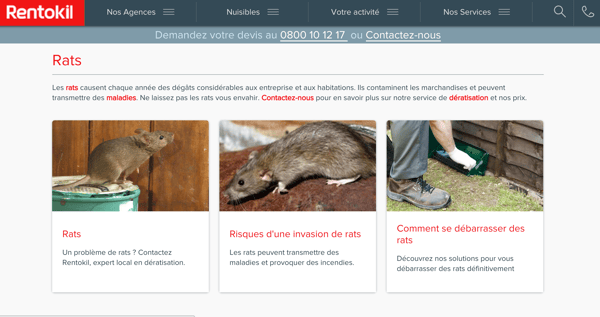
Timeless content unless rat behavior changes soon...
Step 4 - Identify the problems your customers are experiencing
Content creation should start with identifying your customers' problems.
This way, your articles can help them overcome them.
Take Darty for example. With their pages " Darty & you - ideas and advice for all your desires ", they answer some problems or questions from their customers.
Through smart tutorials and thematic articles, they address topics such as " how to choose your mattress ", " how to pamper your feet after a day of skiing " or " how to set up your home theater ".
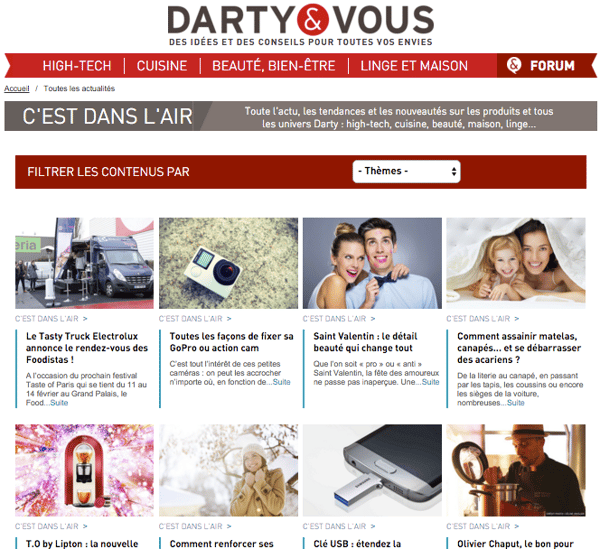
Here, Darty alternates between evergreen content and news content.
The content is divided under 4 themes (high-tech, kitchen, wellness and linen & home) that can be found in their stores.
This information is useful for Internet users. The products sold at Darty are presented in a column on the right or at the bottom of the page.
They are not part of the article but are subtly suggested depending on the topic.
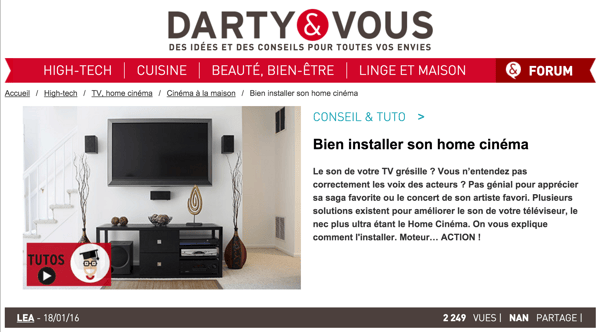
Step 5 - Be sharp
Content that lasts isn't just about bringing in a high volume of clicks over time. It's just as essential that it speaks to Buyer Persona accurate.
To do this, don't be afraid to produce sharp content. It will do well in organic searches in long tail.
Also be sharp in terms of structure and writing quality - evergreen content is first and foremost quality content!
To do this, you can refer to the inverted pyramid principle:
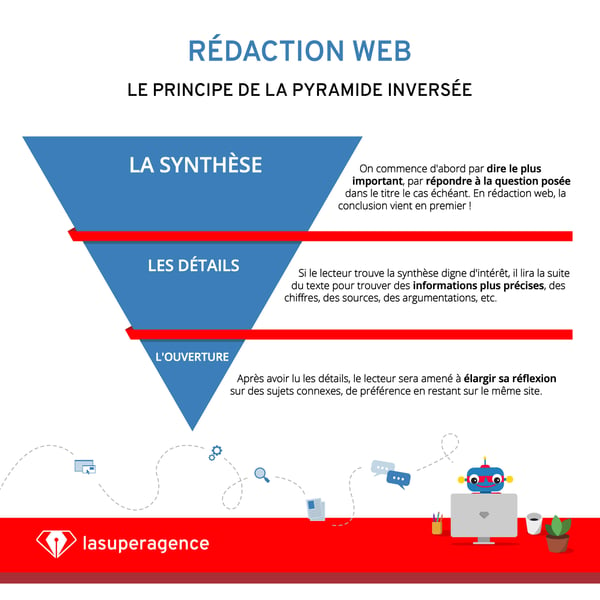
A simple principle that encourages the reader to take in all the content!
Step 6 - Find the right format
- The guides and other white papers work well over time and add real value for users. They do good on search engines for the same reasons: users often type in "how to..." or "guide for...".
- Lists featuring tools or numerical data are useful resources for web users, who will use them and return.
- Love them or hate them lists work! They make up 70% of the most popular articles. They work because the reader knows in advance that they will be able to skim the content quickly if they want to.
Step 7 - Make it long (or short)
Don't be afraid to go long. More in-depth articles can provide all the information that the web user is looking for on a topic.
The idea that topic lengths should get shorter and shorter because readers' attention spans are diminishing over time is beaten down by the success of some blogs.
For example, after finding that its articles that were 500 to 800 words long were less successful than others. The site Quartz decided to offer longer topics and increased its number of repeat visitors.
It seems that beyond 500 words, an article is not quickly enough consumable and below 800 words, it is not detailed enough. This in-between is therefore to be avoided.
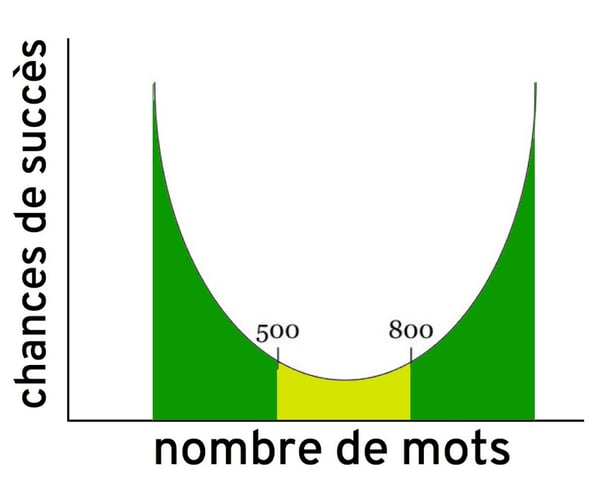
Source: https://goo.gl/9o4OBN
The hinge number may vary, but the trend seems to be repeated on many sites.
As an example, this article is over 1,150 words on "evergreen" content and therefore has a pretty good chance of being read!
To summarize
There is no magic formula for creating content that will endure over time, but by dint of working on the content, the form, you can get close.
You won't go wrong creating quality optimized content for the SEO.









